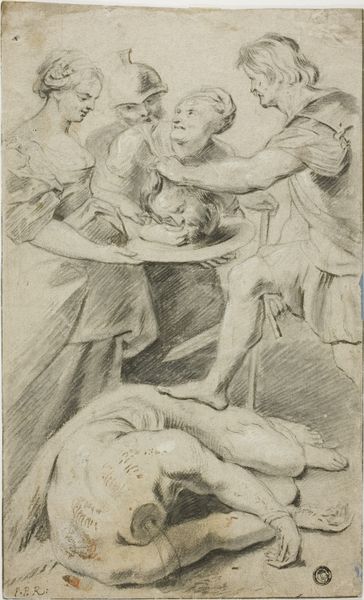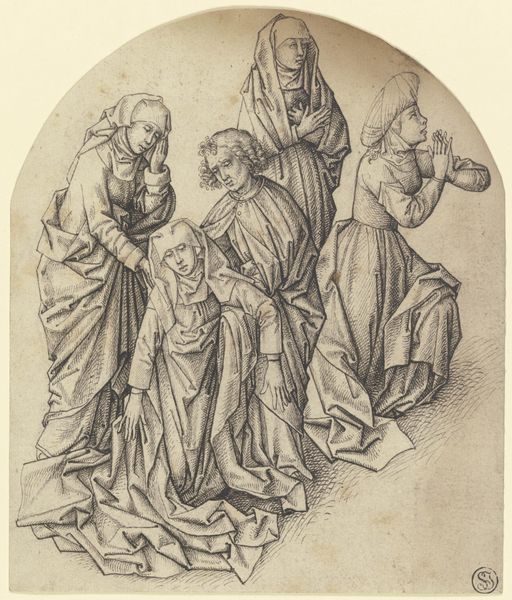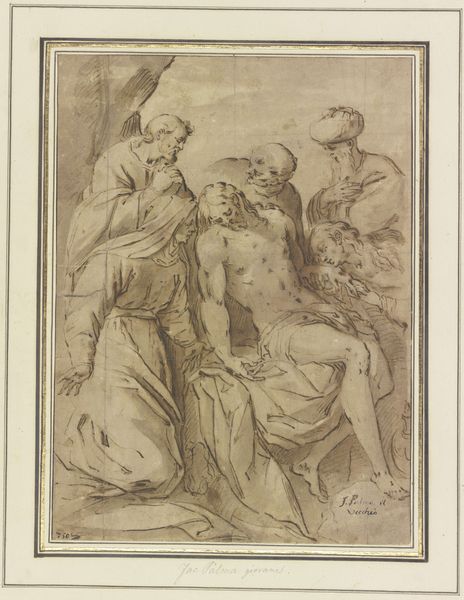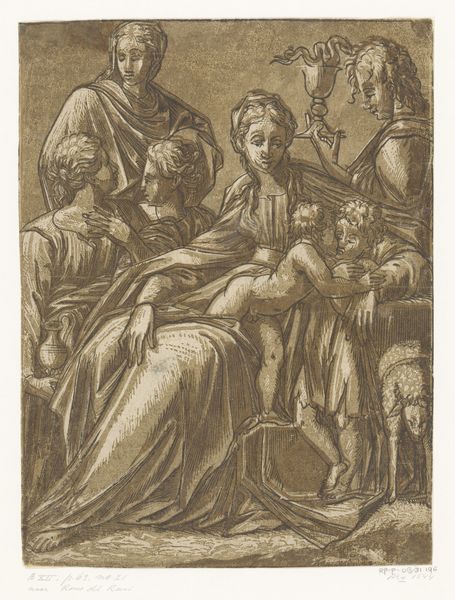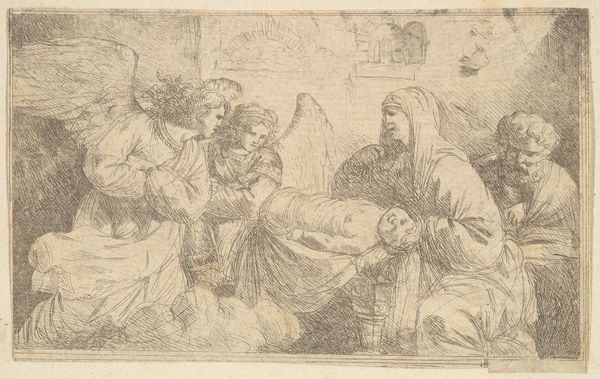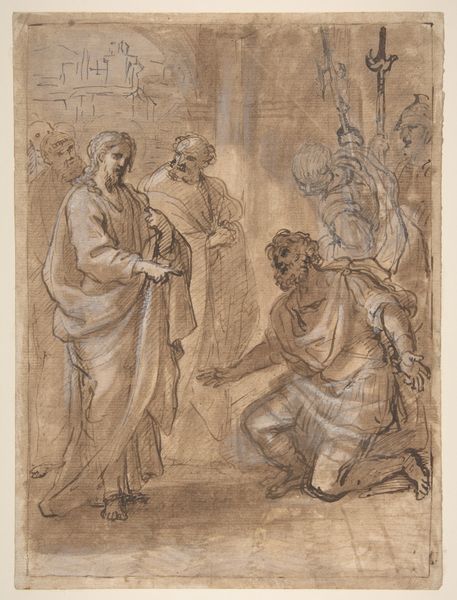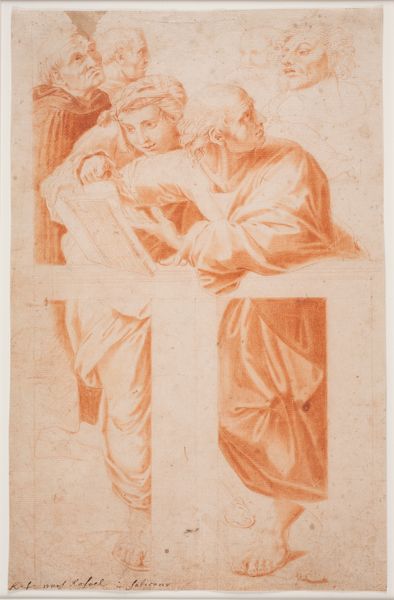
The Virgin and Child accompanied by saints 1535 - 1545
0:00
0:00
drawing, print, paper, pencil
#
portrait
#
pencil drawn
#
drawing
# print
#
figuration
#
paper
#
child
#
pencil
#
italian-renaissance
#
miniature
Dimensions: sheet: 7 11/16 x 5 7/8 in. (19.5 x 15 cm)
Copyright: Public Domain
Editor: Here we have "The Virgin and Child accompanied by saints" by Andrea Schiavone, created sometime between 1535 and 1545. It's a delicate drawing, rendered in pencil on paper, with a slightly faded quality, though I think that only enhances the work. It feels really intimate. I wonder, what do you see when you look at this piece? Curator: Well, it's fascinating to consider this drawing within the context of the Italian Renaissance's visual culture. This period placed immense importance on religious imagery, and drawings like this would have been circulated within artist workshops, as part of their artistic training, even sold as relatively cheap reproductions of paintings. This particular piece uses fairly visible hatching in its rendering of drapery. Why do you think Schiavone chose printmaking for this particular subject? Editor: Perhaps to democratize access to religious imagery? The detail is extraordinary, even more accessible and tangible when not in oil or fresco. Did the ability to mass-produce and distribute images like these shift how people experienced or interacted with religious figures at the time? Curator: Absolutely. Printmaking changed the game. It disseminated not just religious ideology but artistic styles and individual artist's reputations beyond their immediate locality. The *politics* of imagery, especially during the Reformation, was tied to accessibility, right? Did control over dissemination reside with the Church, the artist, or the publisher? Who got to *see* what, and *where*? And who gets to decide the meanings imbued into it? Editor: That’s incredibly insightful! So the physical circulation of the image directly influences its cultural impact and challenges traditional power structures. It's about the accessibility and control of representation. Thanks, I'm going to have to keep that in mind. Curator: Precisely. The socio-political power dynamics, embedded within visual materials, provide us with lenses into this artwork's role in 16th century society.
Comments
No comments
Be the first to comment and join the conversation on the ultimate creative platform.



